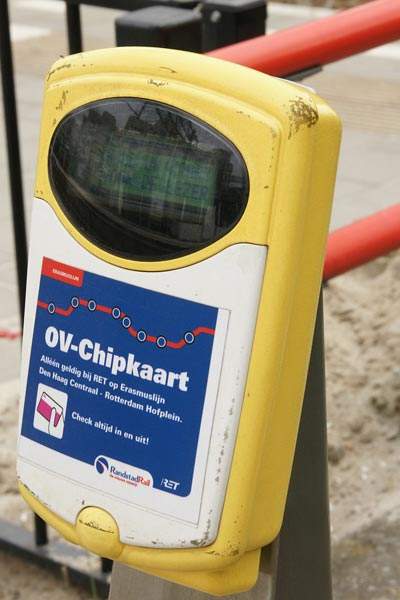The second city of the Netherlands, Rotterdam is a leading commercial centre and one of the world’s largest ports. Part of the intensively populated Randstad region, Rotterdam’s residents and visitors are highly reliant on public transport. The city’s population is around 600,000, with more than double that in the conurbation around the Nieuwe Maas waterway.
Even separate communities like Dordrecht, Delft and Den Haag are within short distance of Rotterdam. Although linked by intercity services of national rail operator NS, coverage is also by urban transit modes.
The project
From a decision taken in 1959 that took into account the limitations of capacity of bus and tram services, Rotterdam became the first Dutch metro when it opened in 1968. With suburban expansion creating demand across a growing area, all of these modes have subsequently been upgraded.
At the heart of the business district, Rotterdam Centraal heavy rail and metro stations are both subject to major rebuilding projects.
The long-standing transport operator in the metropolitan area is RET (from Rotterdamse Elektrische Tram). In rising order of passenger journeys made, their bus, tram and metro services are all subject to expansion and/or vehicle renewals.
The introduction of RandstadRail, a newer entity involving RET and Den Haag’s HTM which in part uses modified former NS heavy rail tracks east of Den Haag and between the two cities on the former Hofpleinlijn, has been controversial and affected by project setbacks.
However, raising capacity and covering more locations than previous rail services remain the driving forces of the project. By 2008, ridership levels on RandstadRail overall were already exceeding those of the heavy rail era, with more development to come alongside the Den Haag-Rotterdam line made possible by the reworking of the service.
Infrastructure
With phases of expansion and contraction, the Rotterdam electric tram network originating in the early 20th century was re-established for long-term development with a new cross-river link that had been abandoned with the opening of the Metro. With new sections and track improvements, the tramway combines street running with dedicated track, including the 808m Erasmusbrug Nieuwe Maas crossing opened in 1996.
The two-line Rotterdam Metro has grown in many stages from the initial 5.8km (3.6 mile) section of the north-south line. Now designated Erasmuslijn, this grade-separated line which is wholly below ground north of the Nieuwe Maas and largely open air elsewhere is fitted for third-rail operation.
Tracks west of Tussenwater station are shared with an extension of the Calandlijn that opened its first section in 1982. Using a mix of overhead and third-rail supply, this mainly east-west route is now the longer of the two lines. It branches in the north east of Rotterdam and includes road crossings.
To connect the Metro with RandstadRail and thereby enable through working between the Erasmuslijn Slinge station and Den Haag Centraal, the twin-bore 2.4km (1.5 mile) Statenweg tunnel with one intermediate station, Blijdorp, is being built north from Rotterdam Centraal. It will connect with the present RandstadRail alignment.
Upon completion, the old line south of the new connection to the Rotterdam Hofplein terminus will be abandoned, with the space vacated becoming available for other uses.
Rolling stock
The initial order for 60 Alstom Citadis trams placed in July 2000 remains one of the biggest made for the model, becoming the city’s first low-floor type when it entered service from 2003. Deliveries under the July 2007 contract for 53 more of the unidirectional type 302 variant will make Rotterdam the largest Citadis operator and will displace RET’s long-serving high-floor trams.
The stock at the Metro’s launch was from domestic manufacturer Werkspoor. Later vehicles from Düwag and Bombardier took account of the two systems used on the network and to allow withdrawal of earlier types.
Den Haag-Rotterdam RandstadRail services (also termed Erasmuslijn), which began in 2006, have used modified and rebranded RET Calandlijn Metro stock. These will be replaced by 21 new Bombardier Flexity Swift three-module, third-rail and overhead supply equipped light rail vehicles. Ordered in June 2005, they were built at Bautzen in Germany, with deliveries and testing units beginning in 2008.
Signalling and communications
To encourage transfer to public transport, park-and-ride sites at six metro stations (including future RandstadRail terminal Slinge) are free. Zone and time-based RET ticketing covers all their modes, with the national transport ticketing system giving wider coverage.
Already in use by RET but with some concerns over its operation and security, the stored-value electronic OV Chipcard is being introduced across the Netherlands with the intention of supplanting other systems in 2009.
The future
Specifically for operations on the two metro lines, RET ordered 43 more Bombardier Swift LRVs in December 2007. RandstadRail working between Rotterdam Slinge and Den Haag is now expected to begin in 2010.
A substantial extension of the Metro may see the incorporation of the present NS line west of Schiedam to Hoek van Holland (which includes the ferry terminal) into the Calandlijn.









